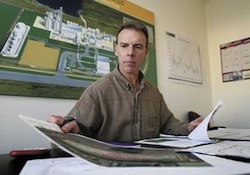 The 2013 Alternative Clean Transportation (ACT) Expo kicks off at the Washington Convention Center today and during the three-day show, new technology diesel advancements in both heavy-duty trucks and light-duty passenger vehicles will be showcased by the Diesel Technology Forum. According ACT, their Expo is North America’s largest alternative fuel and clean vehicle technology conference and expo – representing electric, hybrid, hydrogen, natural gas, propane autogas, and renewable fuels.
The 2013 Alternative Clean Transportation (ACT) Expo kicks off at the Washington Convention Center today and during the three-day show, new technology diesel advancements in both heavy-duty trucks and light-duty passenger vehicles will be showcased by the Diesel Technology Forum. According ACT, their Expo is North America’s largest alternative fuel and clean vehicle technology conference and expo – representing electric, hybrid, hydrogen, natural gas, propane autogas, and renewable fuels.
The Diesel Technology Forum will display information about new technology diesel engines and display one of the newest diesel vehicles now available in the United States – the 2014 Jeep Grand Cherokee EcoDiesel. Forum Executive Director Allen Schaeffer will also partic ipate in an Executive Roundtable – “State of the Union: An Overview of the Alternative Fuel Industry in 2013 and Key Issues for the Road Ahead”. The roundtable will be moderated by New York Times energy reporter Matthew L. Wald and will include:
ipate in an Executive Roundtable – “State of the Union: An Overview of the Alternative Fuel Industry in 2013 and Key Issues for the Road Ahead”. The roundtable will be moderated by New York Times energy reporter Matthew L. Wald and will include:
- Roy Willis , Chief Executive Officer, Propane Education & Research Council
- Marty Durbin , Chief Executive Officer, America’s Natural Gas Alliance
- Allen Schaeffer , Executive Director, Diesel Technology Forum
- Brian Wynne , President, Electric Drive Transportation Association
- Peter Lehner , Executive Director, Natural Resources Defense Council
According to the U.S. and international energy and transportation experts, diesel is going to remain the “dominant” growth fuel in transportation for several decades. Today, more than 80 percent of cargo in the U.S. is transported by diesel power and more than 90 percent worldwide. As a result, the Diesel Technology Forum says diesel technology will play a major role in improving fuel efficiency and reducing vehicle emissions.










